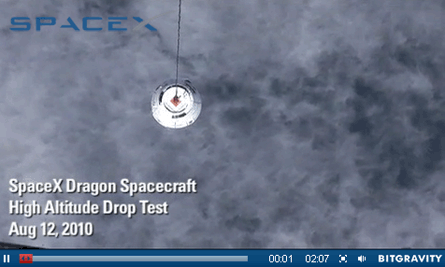Space Exploration Technologies (SpaceX) has moved a step closer to launching the first operational version of its Dragon reuseable space capsule with a successful test of the craft's parachute recovery system.
The 12 August test off the Californian coast, 72km (45 miles) north of Vandenberg AFB, was the last in a series of flights to validate the Dragon design before the first launch of the operational version, expected in 2011.
SpaceX has been contracted by NASA to produce a vehicle that can carry cargo - and later, people - to and from the International Space Station after the rapidly approaching retirement of the Space Shuttle. Under a $1.6 billion contract the Hawthorne, California-based company will provide 12 ISS resupply missions in NASA's commercial orbital transport system (COTS) programme.
 |
|---|
© SpaceX |
The latest event was designed to test the Dragon's parachute deployment systems and recovery procedures. The capsule was carried aloft to 14,000ft (4,300m) under an Erickson S-64 Aircrane and dropped. Both the dual drogue stabilisers and triple 35m-diameter main parachutes worked perfectly, says SpaceX and the capsule splashed down within the 9.6km-diameter target zone.
Although SpaceX plans initial crewed flights to have an ocean splashdown and be lifted to land by helicopter, its intention is to have future landings on the ground.
With this aim, it intends to add deployable landing gear to the capsule. It will also employ thrusters to ensure it lands within 1.6km of its planned target.
Last June, SpaceX carried out a successful test of its Falcon 9 rocket, which will carry the Dragon aloft.
Source: Flight International






















